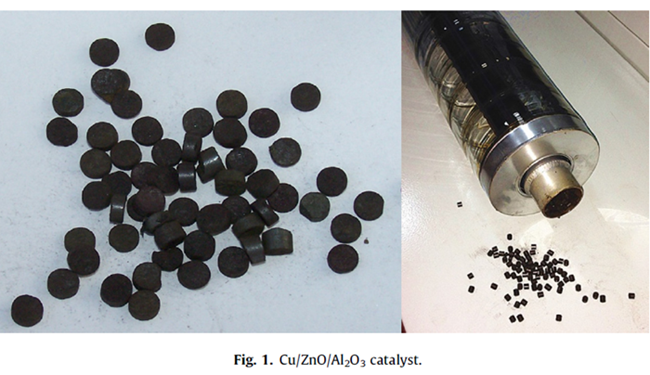The solar receiver/reactor is a key component that influences the conversion efficiency in the solar thermochemical process. A thermochemical solar reactor/receiver consisting of a porous Cu / ZnO / Al2O3 catalyst bed is studied in this paper. A three-dimensional thermochemical coupling model that incorporates the fluid flowing through the porous catalyst bed and energy conservation equations coupling the radiation/convection/conduction heat transfer with the reaction kinetics is proposed to investigate the performances of the receiver/reactor. The factors of influencing the hydrogen production and the temperature distribution, including the mole ratio of water/methanol, the solar radiation and the inlet temperature, are numerically investigated. Numerical simulation results indicate that the deactivation of the catalyst may appear near the receiver/reactor tube wall. The methanol conversion decreases with the increase of the methanol feeding rate, and the low inlet methanol feeding rate should be avoided for the protection of the catalyst bed. A new solar receiver/reactor is proposed by changing the aperture width along the flow direction to make the concentrated solar energy level match the chemical reaction. Compared with traditional solar receivers/reactors, the thermochemical efficiency can be increased by 3% points. The research findings will pave the way for the future development of the mid-and-low temperature solar receiver/reactor.
Conclusions
Based on the fluid flow and energy conservation equations coupling radiation/convection/conduction heat transfer with the reaction kinetics, a three-dimensional model is developed to numerically reveal the performances of the receiver/reactor for the solar hydrogen production with the methanol steam reforming. The main research findings can be summarized as follows.
(1) The factors influencing the hydrogen production and the catalyst bed temperature distributions, including the inlet methanol feeding rate, the solar radiation and the inlet temperature, are investigated. The methanol conversion ratio increases with the augmentation of the inlet temperature and decreases with the increase of the methanol feeding rate. When the inlet temperature is high or the inlet methanol feeding rate is low, the deactivation of the catalyst bed may appear.
(2) The methanol conversion ratio increases with the increment of the mole ratio of the water-to-methanol and DNI. However, when the DNI is high, the deactivation may appear. For these cases simulated in this paper, when the DNI is larger than 900 W/m2, the methanol conversion ratio decreases a little with the increment of the DNI owing to the fact that a high temperature may lead to the deactivation of the catalyst.
(3) A new solar receiver/reactor is proposed by increasing the collected solar flux at the beginning part of the tube while reducing the collected solar flux at the outlet part to match the level of the concentrated solar energy with the chemical reaction. Compared with traditional solar receivers/reactors, the thermochemical efficiency of the new structure solar receiver/reactor can be increased by 3%. For the proposed new solar receiver/reactor, the employed endothermic reaction requires the concentrated solar energy to provide enough thermal energy for driving the reaction; at the same time, the grade of the provided solar thermal energy should be in a good agreement with that of the reaction.
In real-world applications, the understanding of the complicated physical and chemical mechanism of the hydrogen production by the steam methanol reforming method is beneficial for the efficient utilization of mid-and-low temperature solar thermal energy. Our work provides an alternative approach for investigating the performances of the solar receiver/reactor and improving the thermochemical efficiency of the solar receiver/reactor, which needs to be further validated by practical applications in the future and to be further studied on the respects such as the kinetic model of the methanol steam reforming, the evaluation method, and the experimental test.
The results have been published on Solar Energy 134 (2016) 273–283.
